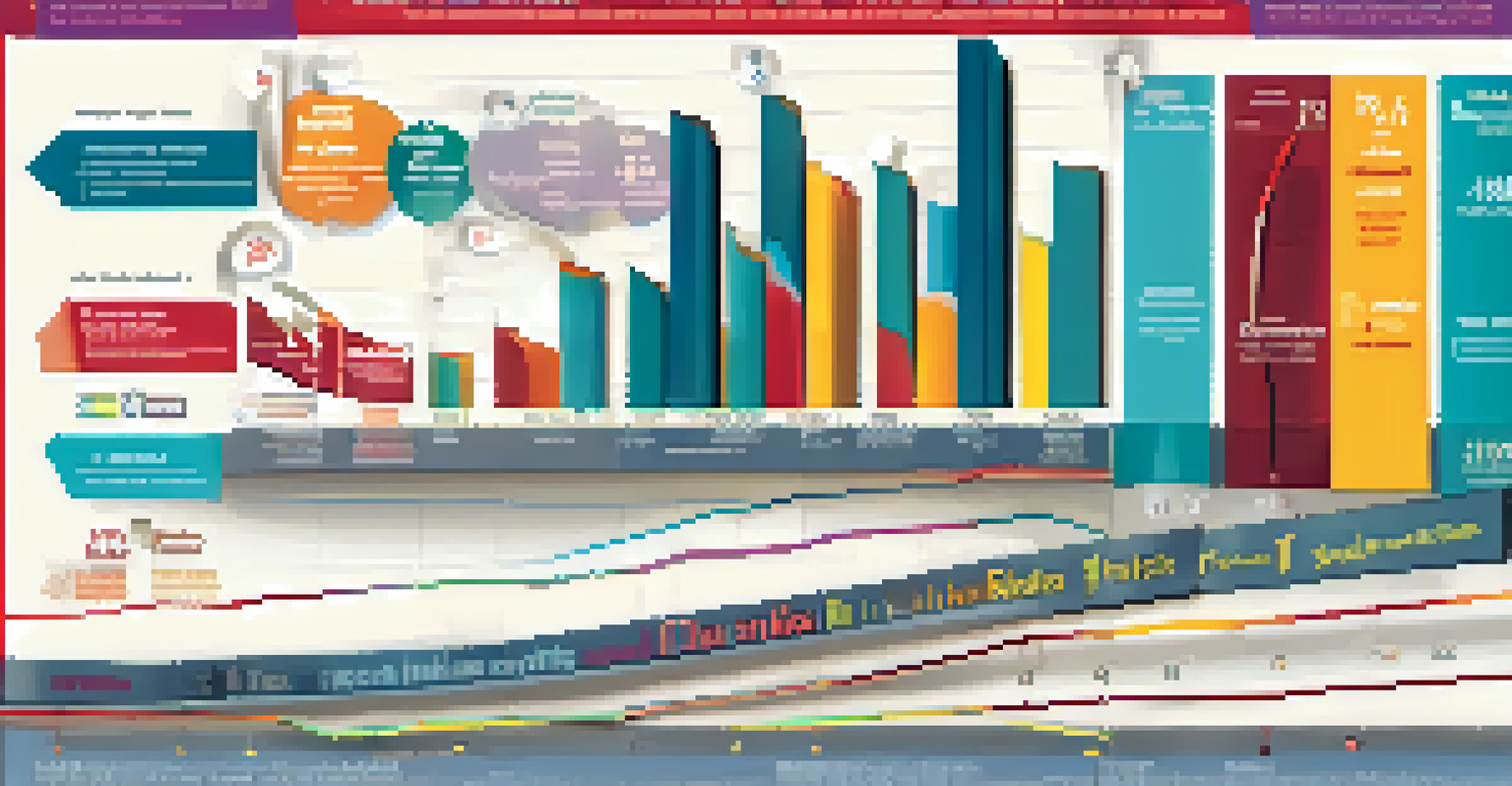California's Tobacco Control Program: Reducing Usage

Introduction to California's Tobacco Control Program
California's Tobacco Control Program (CTCP) was established in 1989 to combat the growing tobacco epidemic. Over the years, it has become a model for other states, showcasing effective strategies to reduce tobacco use among residents. The program aims not only to decrease smoking rates but also to foster a healthier environment for future generations.
The best way to stop smoking is to never start.
With initiatives that include public education, policy changes, and community outreach, CTCP addresses the risks associated with tobacco. By focusing on prevention and education, the program empowers individuals to make informed choices about their health. The emphasis is not just on quitting but also on never starting, especially among youth.
The program utilizes a comprehensive approach by collaborating with various stakeholders, including healthcare providers, schools, and local governments. This collective effort has made a significant impact, drawing attention to the importance of tobacco control as a public health priority.
Key Strategies Employed by the Program
CTCP employs several key strategies to effectively reduce tobacco use. These include implementing smoke-free laws, increasing tobacco taxes, and providing cessation resources. Such measures create an environment that discourages tobacco use while promoting healthier lifestyle choices.

One notable initiative is the statewide media campaign that raises awareness about the dangers of smoking and secondhand smoke. By utilizing various platforms, the campaign reaches diverse audiences, ensuring that the message resonates with a broad demographic. This consistent messaging reinforces the idea that tobacco use is not a social norm.
Effective Strategies Reduce Tobacco Use
California's Tobacco Control Program employs key strategies like smoke-free laws and media campaigns to significantly lower smoking rates.
Moreover, the program supports local communities in their efforts to develop tailored solutions. This grassroots approach ensures that interventions are relevant and culturally appropriate, ultimately leading to more effective outcomes in reducing tobacco usage.
Impact on Smoking Rates in California
The impact of California's Tobacco Control Program on smoking rates has been remarkable. Since its inception, adult smoking rates have dropped significantly, from over 20% in the early 1990s to around 11% today. This decline highlights the effectiveness of the program’s comprehensive approach.
Public health is a shared responsibility, and we must all do our part to protect the health of our communities.
Youth smoking rates have also seen a decline, thanks in part to targeted campaigns aimed at preventing tobacco use among teenagers. By instilling a strong anti-tobacco sentiment in schools and communities, the program has created a cultural shift that discourages smoking among younger generations.
These statistics not only reflect a change in behavior but also suggest a healthier future for Californians. As smoking rates continue to decline, the state is moving closer to the goal of a tobacco-free generation.
Challenges Faced by the Tobacco Control Program
Despite its successes, California's Tobacco Control Program faces several challenges. One of the most pressing issues is the emergence of new tobacco products, such as e-cigarettes and vaping devices. These products have gained popularity, particularly among youth, complicating the battle against tobacco use.
Moreover, funding for tobacco control initiatives can be inconsistent, which affects the program's ability to maintain its outreach efforts. Without adequate resources, it becomes difficult to implement long-term strategies that have proven effective in reducing tobacco use.
Challenges from New Tobacco Products
The rise of e-cigarettes and inconsistent funding pose ongoing challenges for California's efforts to combat tobacco use.
The program also encounters resistance from the tobacco industry, which often employs tactics to undermine public health efforts. This ongoing struggle underscores the need for vigilance and adaptability in the face of evolving challenges in tobacco control.
Community Engagement and Education Efforts
Community engagement plays a pivotal role in the success of California's Tobacco Control Program. Local organizations are crucial in spreading awareness and educating residents about the risks associated with tobacco use. By involving community leaders, the program fosters trust and encourages participation.
Educational initiatives often include workshops, school programs, and public seminars designed to inform people of all ages about tobacco's dangers. These efforts empower individuals to make healthier choices and support friends and family in quitting. The shared knowledge creates a ripple effect that can lead to broader societal change.
Additionally, the program encourages peer-led initiatives where individuals share their personal stories related to tobacco use. Such narratives resonate deeply, making the dangers of tobacco more relatable and motivating others to reconsider their habits.
The Role of Policy in Tobacco Control
Policy changes are essential to the success of California's Tobacco Control Program. Legislative measures such as smoking bans in public spaces and increased taxes on tobacco products have proven effective in reducing consumption. These policies not only deter smoking but also create a supportive environment for those trying to quit.
Furthermore, policies that restrict tobacco advertising and sales to minors are crucial for protecting vulnerable populations. By limiting exposure to tobacco marketing, especially among youth, California aims to prevent the initiation of smoking before it starts.
Community Engagement is Crucial
Community involvement and education initiatives empower residents to make healthier choices and support tobacco cessation efforts.
The program continuously advocates for stronger tobacco control policies at both the state and national levels. By influencing legislation, the program seeks to create a comprehensive framework that sustains its efforts to reduce tobacco use and protect public health.
Future Directions for Tobacco Control in California
Looking ahead, California's Tobacco Control Program is poised to tackle the ongoing challenges presented by new tobacco products. As vaping becomes more prevalent, the program will need to adapt its strategies to address these modern issues effectively. This includes educating the public about the risks of vaping and its potential gateway to traditional tobacco use.
In addition, the program will focus on enhancing its outreach to underserved populations who may experience higher rates of tobacco use. By tailoring initiatives to meet the unique needs of diverse communities, California aims to ensure that everyone has access to the resources and support necessary for quitting.

Ultimately, the goal remains clear: to create a tobacco-free California. By building on past successes and continually evolving its approaches, the Tobacco Control Program aims to safeguard the health of all Californians for generations to come.